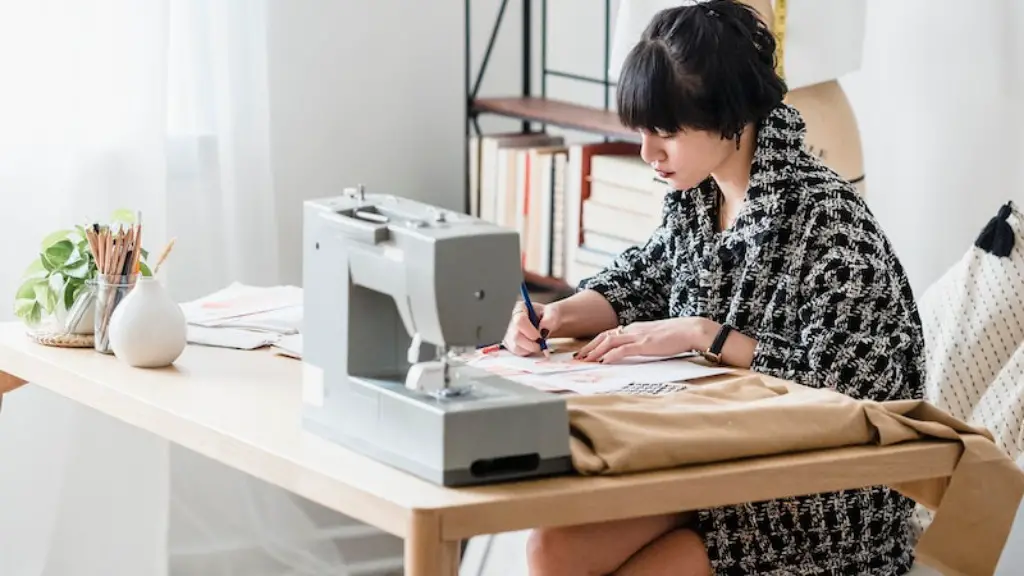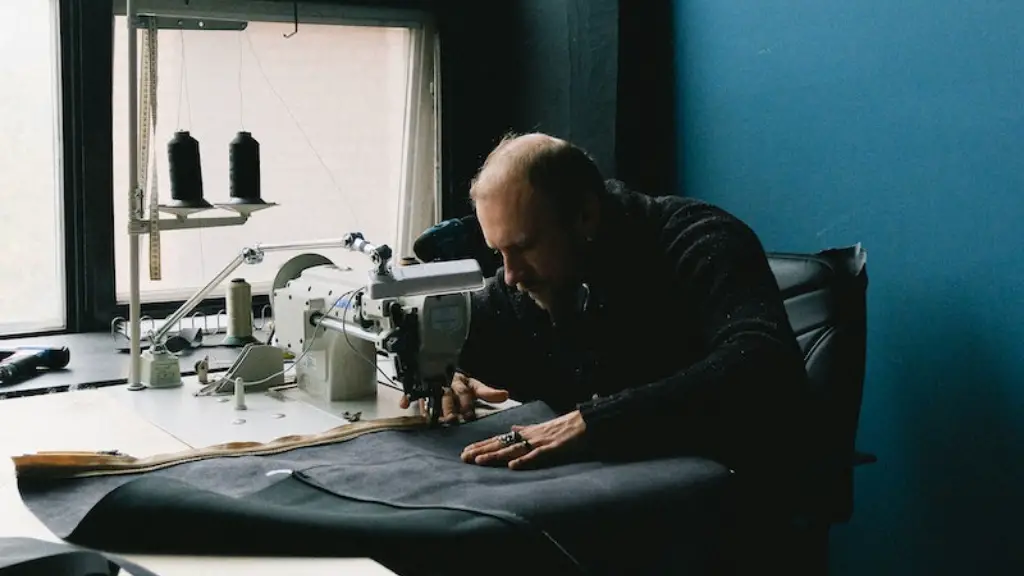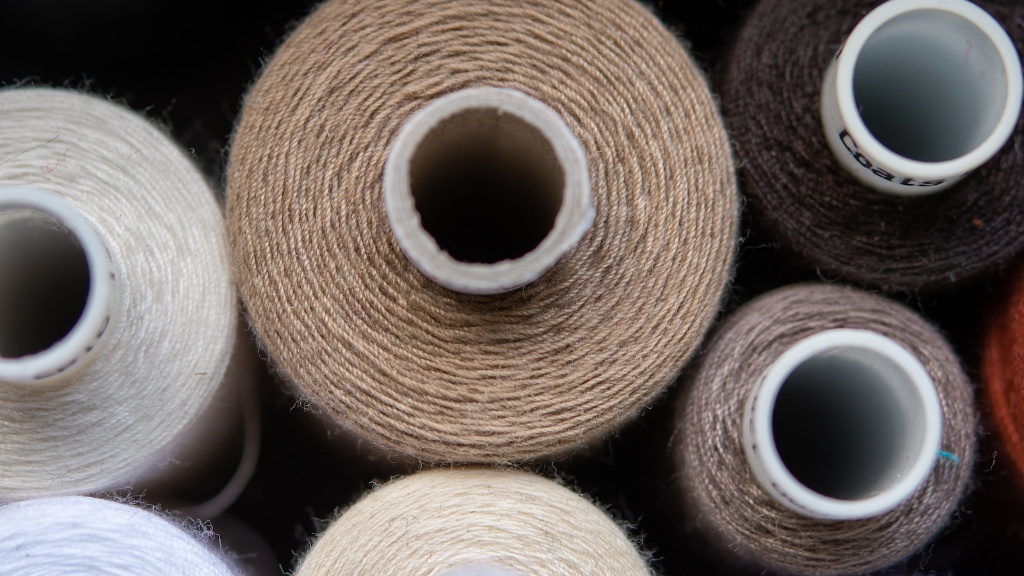Sewing machines are wonderfully versatile tools that can do a variety of projects. One of the many tasks you will come up against when using a sewing machine is getting the thread through the needle. This can be tricky, and while it’s not too difficult once you get the hang of it, it’s important to know how to correctly thread your sewing machine needle before you start.
The first thing you will need to do is make sure the needle is correctly inserted into the machine. The correct way to do this is to make sure the flat side of the needle is facing to the back, away from you. This will ensure that the thread will flow through the eye of the needle correctly. After that, you should check the size of the needle. If it is too large for the material you are working with, it can break the thread or the needle. The best approach is to select the right needle for the job you are doing.
Next, you will need to align the thread with the needle. The easiest way to do this is to start by pulling the needle threader through the hook opening of the needle, which will create a loop. Then, place the thread inside this loop and slide the hook back out of the eye of the needle. This will consequently draw the thread through, creating an even alignment.
At this point, you may need to adjust the tension according to the material you are working with. This can be done by turning the tension dial until the thread is taut, but not too tight. If it is too tight, you may end up with a bunching of the thread on the underside of the fabric. It can be useful to refer to the manual of your sewing machine, as the settings will vary depending on the model.
Before you start sewing, make sure to double check everything is correct. This will help to ensure the thread will flow through smoothly and that the stitches are even and consistent. Then, you can start your project with the knowledge that your needle has been correctly threaded.
How To Prevent Thread Breaks
When sewing, thread breaks can be a common issue, and it’s often down to the needle being incorrectly threaded. To prevent this, double-check the needle is correctly sized for the material and that the thread is correctly aligned. It’s also important to check the tension is correctly set. This can be done manually by pulling on the thread’s length to check for loose or tight tension.
If the tension is too tight, the needle can break the thread, causing a loop on the underside of the fabric. If this happens, the best thing to do is to reduce the upper tension until the thread is taut yet flexible. It may also be useful to try a different needle which is better suited to thinner fabrics, as needles that are too large may also be the cause of thread breaks.
Why You Need To Use The Right Needles For Your Sewing Machine
Having the right needles for your sewing machine is essential if you want to get the best results and avoid potentially damaging the fabric. Different fabrics require different needle sizes to ensure they run smoothly and the stitch patterns look consistent. Needles that are too small won’t penetrate thicker fabrics and will cause the thread to break.
For heavier fabrics such as denim, or heavy canvas, you’ll need to use a denim needle for best results. If you’re sewing something lightweight such as voile or chiffon, use an embroidery needle.
It’s also important to note that the needle should be changed regularly to keep your machine running at its best. The tip of the needle will eventually dull down over time, which can cause skipped stitches and a lot of frustration. When this happens, it’s a sign that you need to change the needle. Most needles last for about 8-10 hours of sewing, but it’s best to check regularly so you can feel confident that the needle is still in good condition.
How To Choose The Best Thread For Your Project
Choosing the right thread is just as important as selecting the correct needle. Thread can vary depending on the weight and type of fabric, and it’s important to select something that is compatible with the material you’re working with. A lightweight fabric such as silk or chiffon requires a thinner thread, while heavier fabrics require a thicker thread.
If you’re using a single- or two-ply sewing thread, you will need to match it to the fiber content of the fabric. This is because different fibers require different threads – for example, cotton thread should only be used when sewing cotton fabric.
It’s also worth considering color when choosing thread. If you’re sewing something like jeans, a contrasting thread can give a unique and interesting finish. However, if you’re trying to achieve an inconspicuous finish, neutral colors are a more subtle option.
Tips For Perfectly Threading Sewing Machine Needles
Once you’ve selected the right needle and thread for your project, it’s time to thread the needle. This can be a tricky process, so to make sure you get it right, here are a few tips:
- Start by setting the machine to its highest tension and gradually lower as you go.
- Make sure the thread is correctly aligned with the needle and that it is correctly placed in the machine.
- Slowly tighten the thread take-up lever and pull the thread to check for tautness.
- Clean the threading and needle holes to help the thread flow more easily.
- Test a few stitches to make sure the needle is correctly threaded.
Following these tips will help to ensure the needle is correctly threaded. If you’re still having problems, you may need to repeat the process until the thread is running smoothly and the stitches are even.
How To Clean And Maintain Your Sewing Machine Needles
Cleaning as well as regularly replacing sewing machine needles is essential for getting optimum results and keeping your machine running smoothly. This can be done with a soft and lint-free cloth, and for more heavily soiled needles, it may be necessary to get it professionally cleaned.
If a needle starts to look worn or is scratched, it’s time to replace it. If a needle is used for too long, it can cause stitches to skip, giving a messy finish. Therefore, it’s wise to always use good quality needles and replace them regularly.
What To Do If The Needle Breaks
No matter how careful you are, there may be times when the needle slips and breaks, causing your project to come to an abrupt stop. If this happens, switch off the machine and remove the broken needle using tweezers. Then, replace it with a new one and check the machine settings to make sure everything is correct before you start stitching again.
If the needle has bent or you’re unable to thread it correctly, it’s best to replace the needle with a new one. It’s also a good idea to check the machine for any blockages that could be causing the needle to bend or break, as there could be something stuck in the cutting blade.
Conclusion
In conclusion, threading a sewing machine needle correctly is essential for achieving a perfect finish. It is therefore important to make sure the needle is correctly inserted and aligned with the thread, and that the tension is correctly set. Choosing the right needle for the job, maintaining it and replacing it regularly can also make a big difference to your results.





